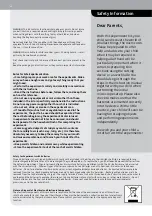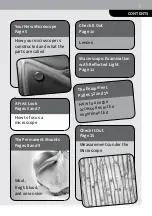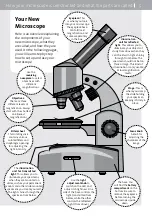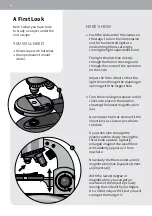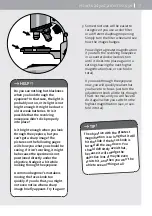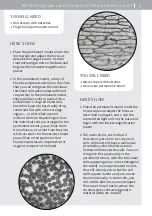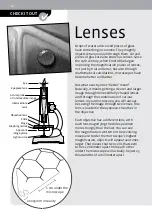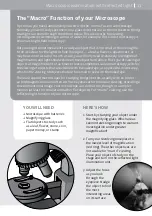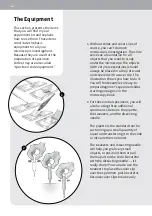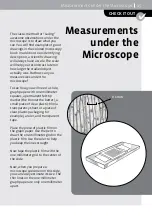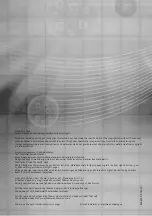
How to adjust a microscope
7
3. Some structures will be easier to
recognize if you use a color filter
or a different diaphragm opening.
Simply turn the filter wheel and see
how the image changes.
You will get a greater magnification
if you turn the revolving nosepiece
in a counterclockwise direction
until it clicks into place again in a
setting showing the next-higher
magnification (10x, or 100-fold in
total).
If you look through the eyepiece
now, you will quickly realize that
you have to re-focus. Just turn the
adjustment knob a little bit, though.
That’s normal, and you will have to
do it again when you switch to the
highest magnification (40x, or 400-
fold in total).
The objective with the greatest
magnification is so long that it will
hit the slide if the focus knob is
turned all the way down. Y
ou
should definitely avoid that
,
because it will smudge the
objective lens or maybe even
scratch it, and then you won
’t be
able to see anything at all.
Do you see nothing but blackness
when you look through the
eyepiece? In that case, the light is
probably not on, or its light is not
bright enough. It might be due to
old or weak batteries. Or is it
possible that the revolving
nosepiece didn’t click properly
into place?
Is it bright enough when you look
through the eyepiece, but you
can’t get a sharp image? The
pictures on the following pages
will show you what you should be
seeing. If it isn’t working, it might
be because the specimen is not
positioned directly under the
objective. Nudge it a bit while
looking through the eyepiece.
A common beginner’s mistake is
moving the focus knob too
quickly. If you do that, you might
not even notice when a sharp
image briefly appears. Try it again!
3
C
TIP!
C
HELP?!


